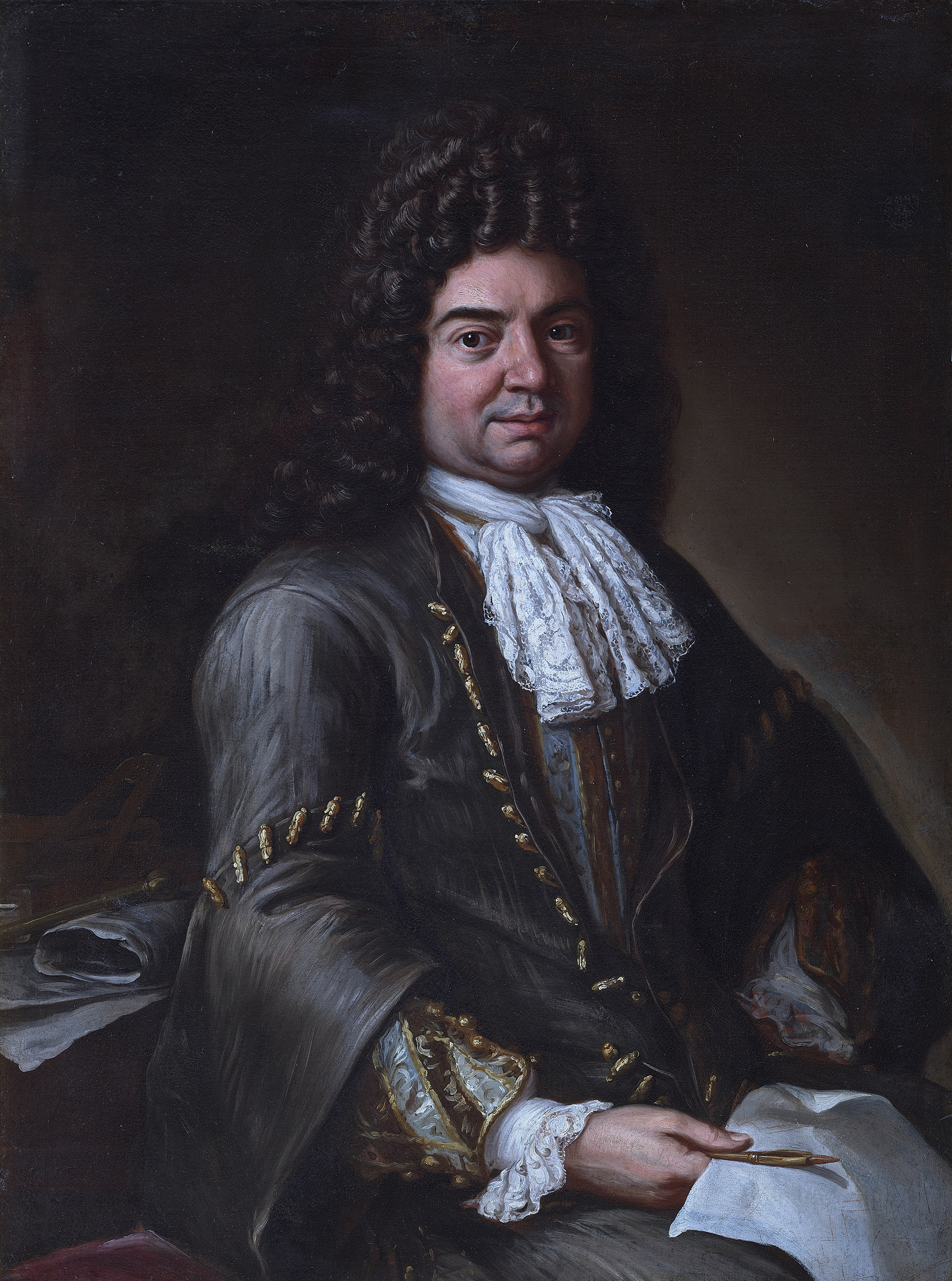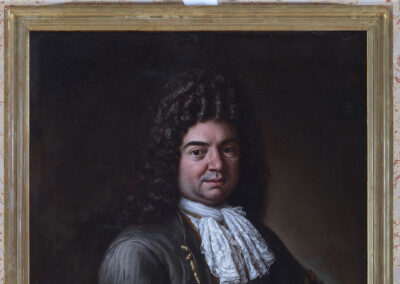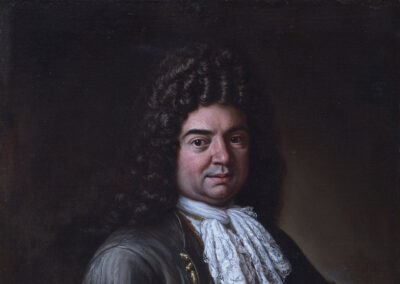The sitter is Filippo Schor, an Italian architect, set designer and painter from a family of artists, originally from the Tyrol, with a workshop that worked primarily on the ornamentation of great Roman palaces. The Marquis del Carpio placed him in his service at the embassy in Rome and in the viceroyalty of Naples, where he became an impresario, an opera stage designer - performing works set to music by Alessandro Scarlatti - and a designer of ephemeral apparatus for the commemoration of royal anniversaries.
Under the viceroyalty of his successor, the 9th Count of Santisteban, he also worked as an engineer and topographer, but it was under the 9th Duke of Medinaceli, who took his brother Christoph with him from Rome to Naples, with whom he was most outstanding. Medinaceli commissioned him to build an ephemeral amphitheatre in front of the Royal Palace on the occasion of the feast day of Mariana of Neoburg. Later, together with his brother Christoph, he was commissioned to organise a splendid funeral in honour of his mother, Caterina Antonia of Aragon, VIII Duchess of Segorbe, a funeral that gave rise to a book entitled "Pompe funerali celebrate in Napoli per l'eccellentissima signora D. Caterina d'Aragona e Sandovale, duchessa di Segorbia, Cardona, &c." in which the Parthenopean intellectual elite took part and in which Giambattista Vico made his literary debut, a book that the foundation acquired some years ago. Called to Madrid by Charles II, he took part in the ornamentation of the Alcazar chapel. On his return to Spain in 1702, the Duke of Medinaceli appointed him painter to his household.
This canvas was one of a series of four portraits commissioned by the 9th Count of Santisteban, Viceroy of Naples between 1687 and 1696. In the inventory drawn up in 1697, on the death of his wife, the series is described as follows: "Four portraits of the virtuous Phelipe Scor, Alexandro Scarlati, Matheucho and Petrucho Neapolitanos of five and three and a half palms with gilt and black frames, all valued at one thousand and six hundred Reales worth fifty-four thousand and four hundred maravedís". The common denominator of the four portraits is their status as "virtuosos" of the Neapolitan operatic world. The one called "Petrucho" in the inventory was Pietro Ugolini, the most famous of the arch lute players of the time. Matheucho was a "castrato" nicknamed "the nightingale of Naples" who began his career in the viceroyalty, under the protection of the Countess of Santisteban, went to Spain between 1698 and 1700, called by Mariana of Neoburg in order to alleviate the depressions of Charles II with his singing, and returned to Naples requested by the vicereine, Duchess of Medinaceli. Finally, Alessandro Scarlatti began his career in Rome in the service of Queen Christina of Sweden and later moved to Naples, under the viceroyalty of the Marquis del Carpio, as maestro di cappella, a post he continued to occupy, beyond the Spanish viceroyalty, under Austrian rule.
The series was dispersed in the will of the 15th Duke of Medinaceli (who died in 1873, although the distribution did not begin until 1889 and, in some cases, was not completed until 1909). Three of them formed part of the lot awarded to María Fernández de Córdoba y Pérez de Barradas, married to Alfonso de Silva, Duke of Híjar, and were divided again in the following generation. The first-born, 17th Duke of Híjar, was awarded the portrait by Alessandro Scarlatti, a work that eventually went, along with the house of Híjar and the rest of the collection inherited from Medinaceli, to his granddaughter, the 18th Duchess of Alba, Cayetana Fitz-James Stuart y Silva, where it is still on display in the palace of Liria. The portraits of Mateo Sassano and Pietro Ugolini passed to his youngest son, the Duke of Almazán, and ended up on the market. The former is now in the Museo de Artes Decorativas in Madrid and the latter in the Virginia Museum of Fine Arts.
This portrait by Filippo Schor was part of the lot awarded to the firstborn, Angela María Fernández de Córdoba y Pérez de Barradas, married to the Duke of Uceda y Escalona, later Duke and Duchess of Osuna, in whose lineage it has remained to the present day.
Although it seems logical that the entire series was painted by a single artist, two have long been attributed to Francesco Solimena (Matheucho and Alessandro Scarlatti) and the other two to Paolo de Matteis. Solimena is not mentioned in any inventory of the house of Santisteban, although he must have had a relationship with the viceroy, according to what the latter wrote to Madrid in 1693: "the best painters in this city are Francisco Sol Mena and Pablo de Mathei [...] and both will be very happy to go to this court to serve His Majesty". Recently, Ricardo Lattuada and Nicola Spinosa have attributed the painting of Pietro Ugolino to Paolo de Matteis, a painter who was in the service of the 9th Count of Santisteban, for whom he painted a cycle of canvases still preserved in the church of the convent of the Poor Clares of Cocentaina, patron of his house.



